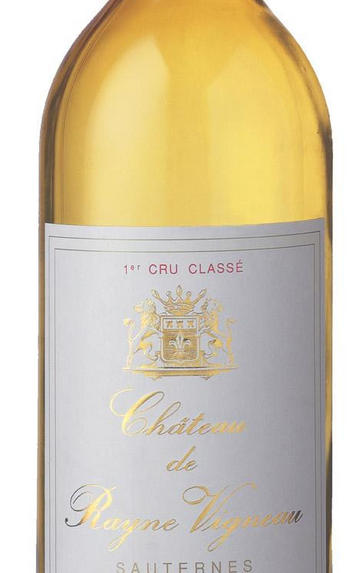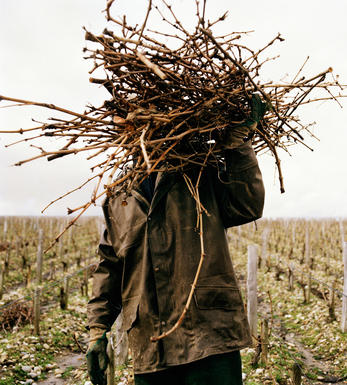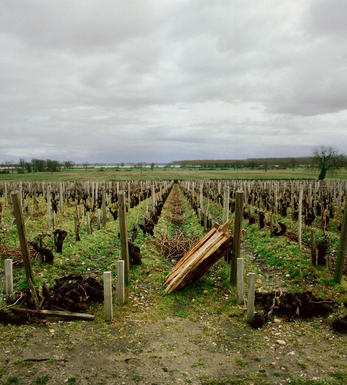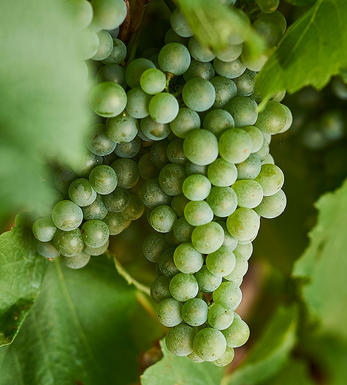
2005 Château de Rayne Vigneau, Sauternes, Bordeaux

Critics reviews
Neal Martin - 29/06/2015
Robert M. Parker, Jr. - Wine Advocate - eRobertParker.com #219 Jun 2015
About this WINE

Chateau de Rayne Vigneau
Owned by SC du Château de Rayne-Vigneau (Mestrezat), this 79 ha property produces on average 20,000 cases per year. Located in the south of the Sauternes appellation, next to Ch. Lafaurie-Peyraguey, the property shares a similar climate to that enjoyed by Sauternes. Hotter and more humid than the Médoc, autumnal early-morning mists, triggered by the meeting of the tributary Ciron and the river Garonne, create ideal conditions for the development of `botrytis' on the grape skins.
The vineyards (Sémillon 75%; Sauvignon Blanc 23%; Muscadelle 2%) are situated on a mound close to and overlooking `le Ciron' tributary. The wines ferment in double-lined, stainless steel vats before being transferred into oak, 60% new, for 18 months. In 1855 it was classified as a 1er Cru Classé.

Sauternes
Sauternes is where arguably the world's finest sweet white wines are produced. The Sauternes appellation actually consists of five communes: Barsac, Preignac, Bommes, Fargues and Sauternes itself. Barsac is also an appellation in its own right.
Sauternes literally has an atmosphere different from any of the other major communes. At the southern tip of the Graves,close to the Garonne, not only is the land hillier and decidedly more bucolic but it also enjoys a specific mesoclimate of evening autumn mists which linger until well into the following day, unless burnt off by warm sunshine.
The mists are caused by the cool, spring-fed waters of the Ciron River meeting the warmer tidal Garonne, and the result is an ideal environment for the growth of the mould botrytis cinerea. When its arrival is felicitous, it feeds on the water in the ripe grapes, dehydrating them and leaving sweet, shriveled fruit.Other regions in Bordeaux (ie Cadillac, Loupiac) produce wines in a similar style from the same method, but none achieve the profundity and complexity of Sauternes.
Recommended Châteaux : Ch. D'Yquem, Ch. Climens (Barsac), Ch. Suduiraut, Ch. Rieussec, Sigalas- Rabaud, Ch. Coutet (Barsac), Ch. de Fargues, Ch. Lafaurie-Peyraguey, Ch. Doisy-Védrines (Barsac), Chateau Partarrieu, La Tour Blanche

Sauvignon Blanc & Sémillon
The blend used for White Graves and Sauternes and rarely encountered outside France. In the great dry whites of Graves, Sauvignon Blanc tends to predominate in the blend, although properties such as Smith Haut Lafite use 100% Sauvignon Blanc while others such as Laville Haut Brion have as much as 60% Sémillon in their final blends. Sauvignon Blanc wines can lose their freshness and fruit after a couple of years in bottle - if blended with Sémillon, then the latter bolsters the wine when the initial fruit from the Sauvignon fades. Ultimately Sauvignon Blanc gives the wine its aroma and raciness while Sémillon gives it backbone and longevity.
In Sauternes, Sémillon is dominant, with Sauvignon Blanc playing a supporting role - it is generally harvested about 10 days before Sémillon and the botrytis concentrates its sweetness and dampens Sauvignon Blanc`s naturally pungent aroma. It contributes acidity, zip and freshness to Sauternes and is an important component of the blend.


Buying options
Add to wishlist
Description
A fine, bright pale colour, lovely forward fruit, elegant and precise with an attractive medium/long fragrant finish. For enjoyable early drinking. Drink 2008 to 2020 BBR Score: 16/20
wine at a glance
Delivery and quality guarantee